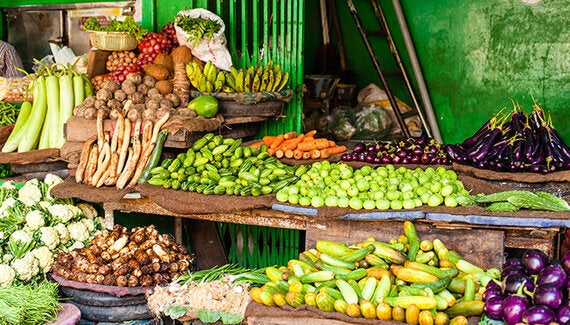On July 14, Baroness Northover, Liberal Democrat spokesperson for International Development chaired an event at the House of Lords: 'Sustainably Meeting the Global Food Crisis: Why we need to 'green' cold chains'. How to feed the world's growing population without creating unintended environmental damage was the focus of this international expert panel event.
Food security is one of the greatest challenges of our time - 800 million people go hungry every day, predominantly in developing countries. The FAO estimates that by 2050 feeding a global population of 9 billion will require a 70% increase in food production. However, ensuring that growing urban populations have access to nutritious produce at an affordable price calls for more than increased yields. It requires movement.
The successful movement of food to market is vital to producers and consumers alike. Transporting food from farm to fork is about economics as well as nutrition.
The affordability of food requires populations to have access to enough nutritional produce at a stable price. For farmers to see a return on their produce, it must retain its value in transit and be kept fresh.
The movement of perishable produce, such as fruit, vegetables, meat and fish requires an integrated chain of refrigerated transport and refrigerated storage - a cold chain.
Where cold chains are lacking worldwide, 200 million tonnes of food spoil before reaching market every year. This quantity of food, that could otherwise have been sold and consumed, represents not only nutritional loss, but also a squandering of the labour, energy, water and natural resources used in its production.

India is the world's largest producer of milk and the second largest producer of fruit and vegetables. Yet it is home to more than 25% of the world's hungry poor. While more than 40% of children under five are undernourished, a staggering $13 billion of fresh produce is wasted annually in India. The lack of a reliable, integrated cold chain across the country is a significant contributing factor to this scandalous loss of food.
Notably, there has been significant investment in cold infrastructure, and India now has the largest volume of cold storage in the world. However, storing a product for longer is futile if it cannot be transported to market without spoiling. There needs to be not only cold, but cold in motion.
The Indian National Centre for Cold-chain Development projects the need to spend more than US$20 billion on cold chain infrastructure, of which almost 50% will be needed for refrigerated transport. Currently, India's refrigerated truck fleet numbers less than 10,000 but should be nearer 180,000 to meet basic demand - to put this in perspective, the UK's fleet is 84,000 vehicles.
The growth of India's refrigerated fleet, which is vital to move food from productive rural areas to the growing cities, presents both a challenge and an opportunity.
The challenge? How to provide the cooling. Existing refrigeration units used on chilled trucks are predominantly powered by diesel, consuming up to 20% of a truck's fuel. These small engines are unregulated and disproportionately polluting, emitting many times the NOx and harmful particulates of the main truck engine.
If these diesel units were deployed across Indian then the environmental and health consequences would be severe. An additional 100,000 transport refrigeration units on India's roads would generate the same amount of particulate pollution as 2.9 million modern diesel trucks.
The opportunity? This lies in meeting the cold chain challenge with sustainable, clean technologies. This 'clean cold revolution' would enable the refrigerated fleet to forego diesel-powered refrigeration and adopt sustainable, zero-emission technology.
Commercially viable, affordable technologies, such as liquid nitrogen-powered refrigeration systems, are coming to market rapidly. These could enable a leapfrog to clean, sustainable, reliable cold chains. Clean cold chains would deliver both improved food security and better air quality.
Doubtless, increased food production has its role to play, but it is not the only answer to the question of how to feed a growing population. There is no sense in producing more food when it cannot be moved around a country, to the people who need it. What is needed is a paradigm shift to zero-emission, clean cold technologies to transport food, while retaining its nutritional and economic value.
We have to keep food moving - but we must not create an environmental disaster to prevent a social crisis.